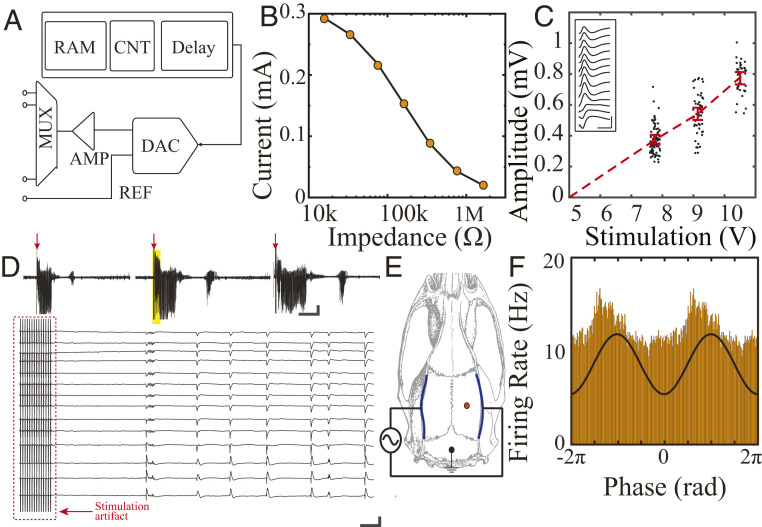Fig. 4.
MTA-based implantable system allows automatic, multimodal, controllable electrical stimulation in freely moving rodents. (A) Schematic of the multichannel, multiplexed stimulation block (Top). RAM = random access memory, CNT = counter, MUX = multiplexer, AMP = amplifier, DAC = digital analog converter, REF = reference. (B) Stimulation current as a function of electrode impedance, evaluated in vitro. (C) Hippocampal evoked-response amplitude as a function of bipolar commissure stimulation voltage. Inset: sample evoked-response waveform profile across CA1 layer generated by pulse stimulation (10 V, 800 µs) of the hippocampal commissure (Scale bar, 50 ms, 500 µV). (D) MTA system enables implementation of an automated kindling protocol. Three sample seizures automatically triggered by patterned electrical pulses delivered to the hippocampal commissure (Upper traces, 800 µs, 30 µA, 60 Hz for 2 s; time of stimulation noted by red arrows [Scale bar, 30 s, 500 μV]). High-resolution sample traces derived from time epoch denoted by the yellow box show stimulation artifact and onset of the ictal pattern (Bottom [Scale bar, 0.5 s, 1 mV]). (E) Schematic of transcranial electrode placement and intracranial recordings. The stimulation is delivered through the MTA system to a pair of TES electrodes. (F) Histogram of hippocampal multiunit activity is phase modulated by the TES stimulation (black trace).

